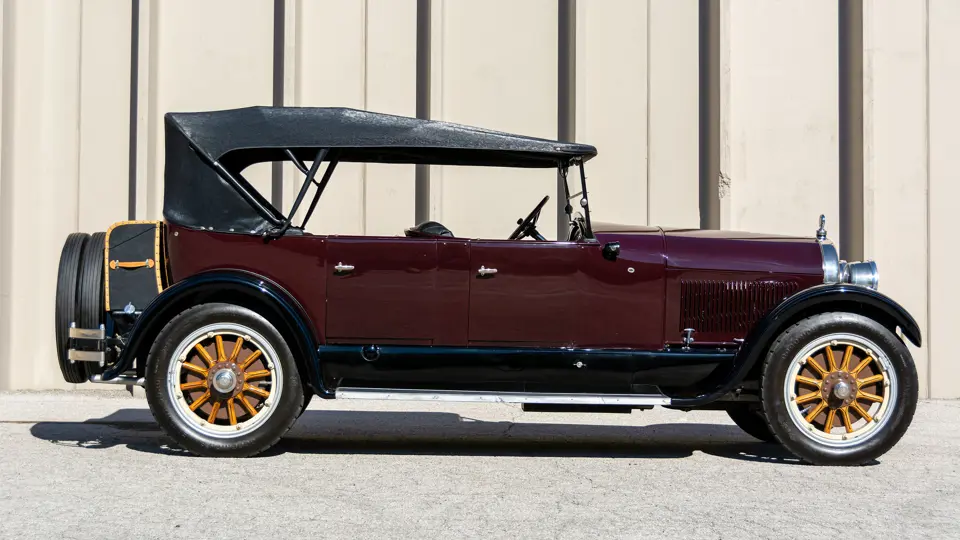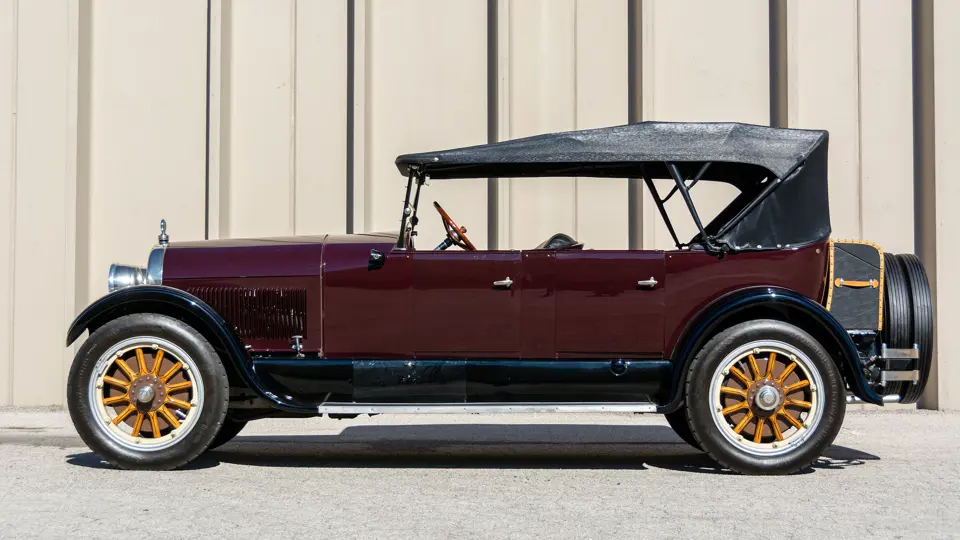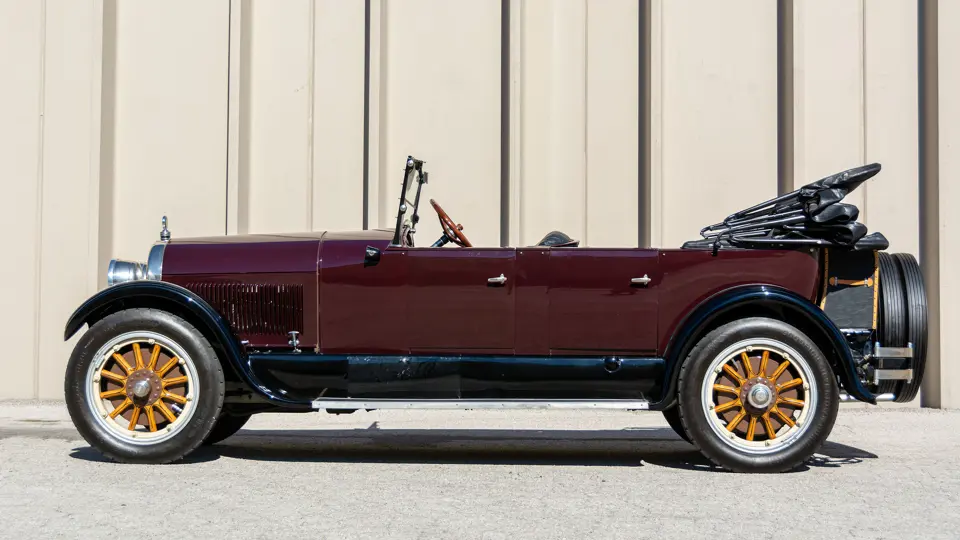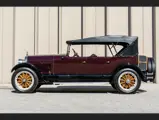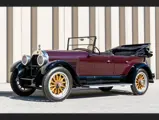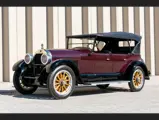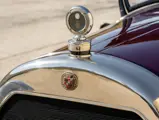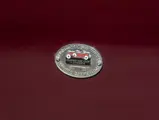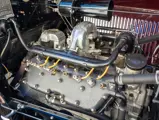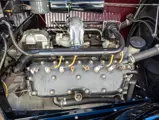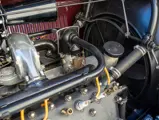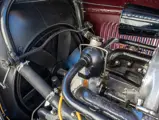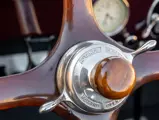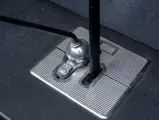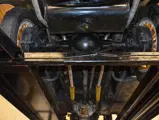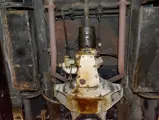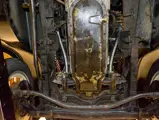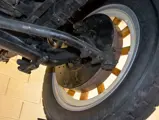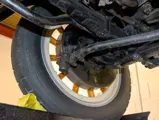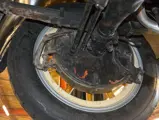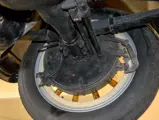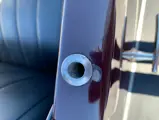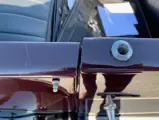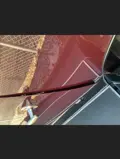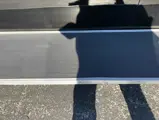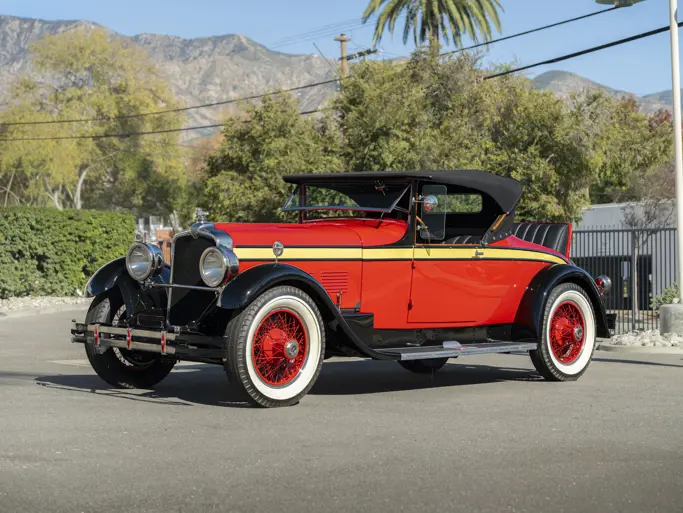
1924 Cadillac V-63 Phaeton
{{lr.item.text}}
$50,000 - $60,000 USD | Not Sold
{{bidding.lot.reserveStatusFormatted}}
- Debut year for the stylish, technologically advanced Cadillac V-63
- Sophisticated 314.5 cu. in. V-8 with counter-balanced cross-plane crankshaft
- Cadillac’s first year for four-wheel brakes
- Elegant Phaeton bodywork; maroon with black fenders over a black interior, black top
- Recognized as a CCCA Full Classic; ideal for touring events
Cadillac introduced the new V-63 in 1924, ushering in a host of refinements to the already superlative engine and chassis. Central to the V-63 was its 90-degree, 314.5 cubic-inch V-8, now updated with an ingenious counter-balanced, cross-plane crankshaft. This revolutionary new design allowed for a significantly lighter flywheel and afforded the V-63 exceptional refinement. Such was its smooth and quiet nature that even Rolls-Royce of America took notice, the firm’s chief engineer stating that “the quartered-crank V8 would make obsolete all long crankshaft engines.”
Paired with the powerful new engine was a new strengthened chassis with four-wheel brakes, a first for any Cadillac. Eleven catalog body styles were available, ranging in price from $3,085 for the tourer to $4,600 for the flagship limousine. The V-63 was a technical marvel of America’s golden age of motoring, and it was a tremendous success for Cadillac, selling 25,000 examples in its two-year production run—yet very few of these beautiful and imposing Cadillacs survive today.
The 1924 V-63 Phaeton featured here is a rarely-seen example of Cadillac’s technological tour de force. According to the factory ledger, this handsome Phaeton left the works on the 21 May 1924, destined for Munger Auto Co. of Dallas, Texas, with J.A. Russell listed as the original owner. The Cadillac remained in Texas for nearly all of its life, trading hands early on to fellow Dallas resident Earnest McCanless, who owned the car from the mid-1920s through 1942, when he sold it to Charles Gharis. In 1966, it was acquired by Charles Matthews of Waxahachie, Texas, who treated the V-63 to its first restoration, and carried on enjoying the car for many years. In the 1970s, Matthews parked the Cadillac in his barn, where it remained until after his passing. In 2010, the Campbell family (also of Texas) acquired the Cadillac from the Matthews estate and treated it to a high-quality cosmetic restoration.
After extensive freshening and restoration work, the grand and imposing Cadillac earned a Classic Car Club of America National First Prize, and its most recent owners have enjoyed it for touring and road events. The restoration included a new top in period-correct grained vinyl material, along with a full set of matching side-curtains. The soft trim is tidy and inviting, displaying slight creasing in the seating surfaces earned through occasional use. Brightly polished nickel-plated fittings accent the handsome maroon over black livery. Accessories include nickel-plated bumpers, Broadlight drum headlamps, a Moto-Meter, and polished radiator shell. Twin rear-mounted spares and a fitted trunk accentuate this elegant Cadillac’s already impressive length and sporting character.
Gently mellowed from years of careful use and enjoyment, this rare and marvelous Cadillac is a fine choice for touring with groups like the CCCA. The V-63 is a significant model in Cadillac’s rich and storied history, laying the foundation for the archetypal Classic Era Series 341 and Series 355 that followed it. This lovely example is suited to continual enjoyment on the road, where its power and technical sophistication can be best appreciated.




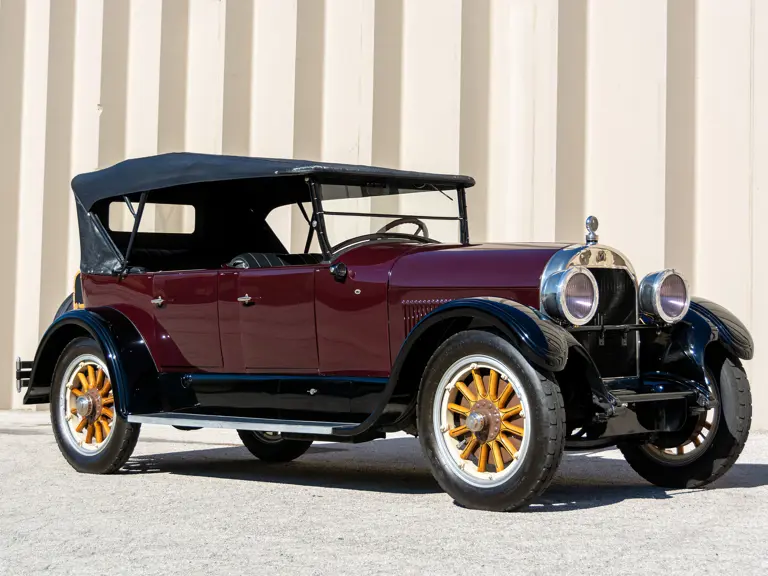
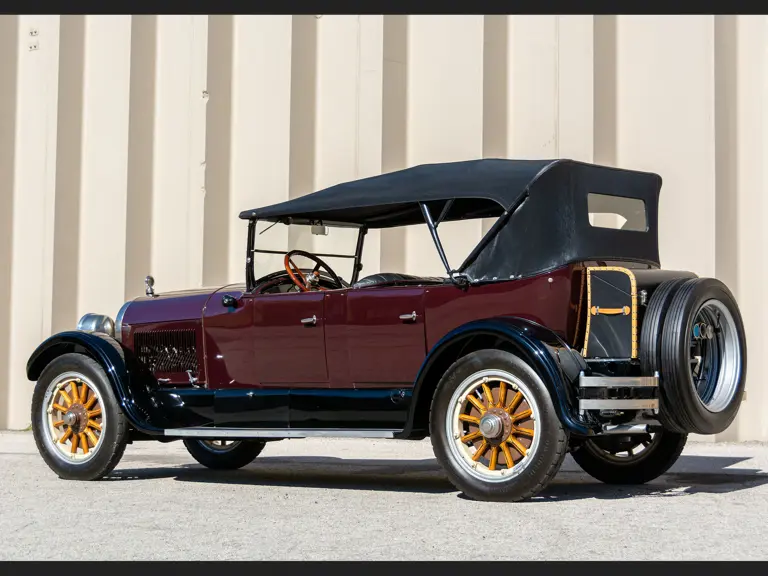
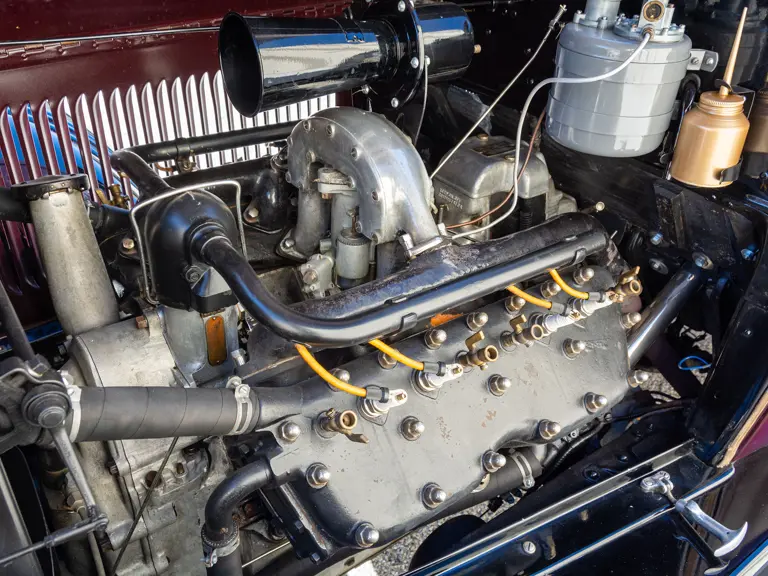
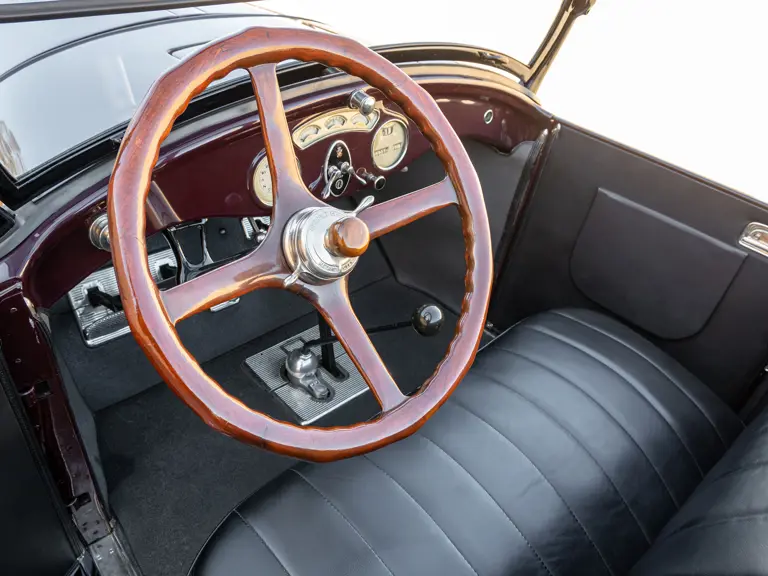
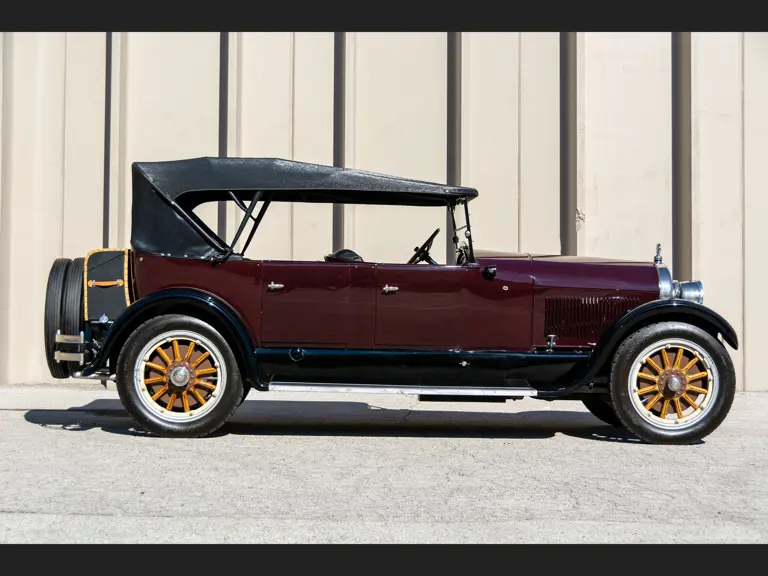
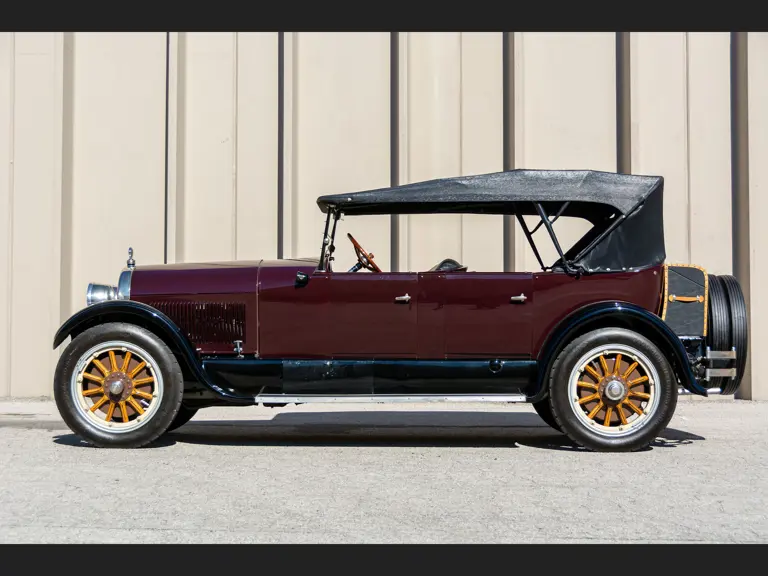
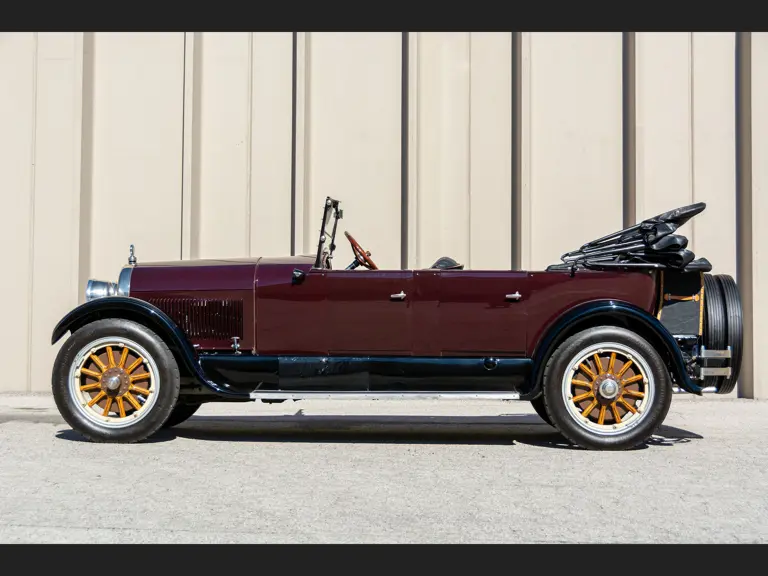
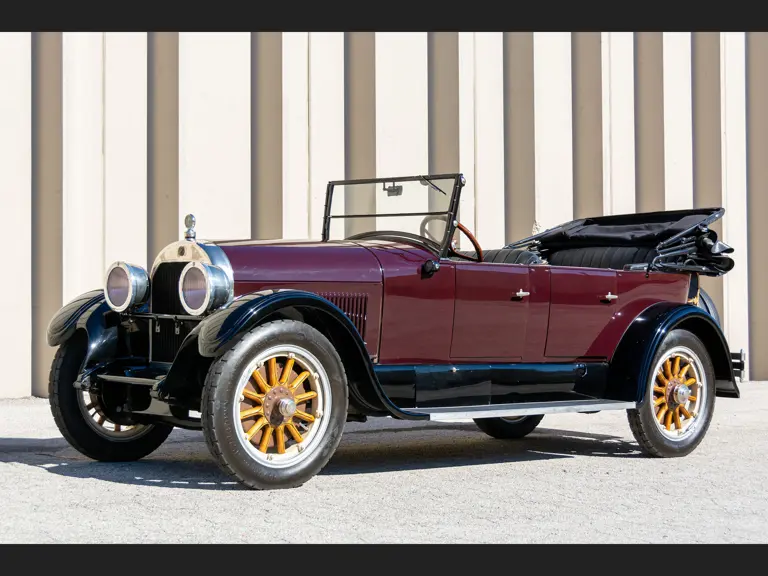
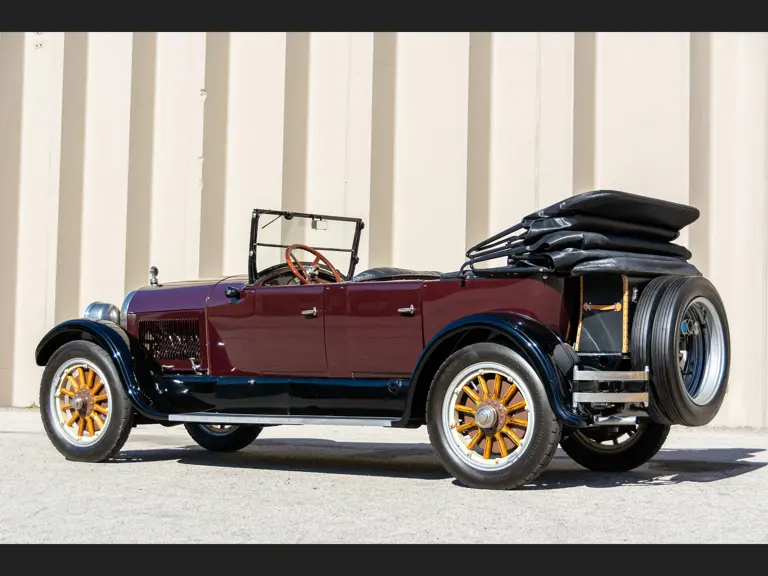


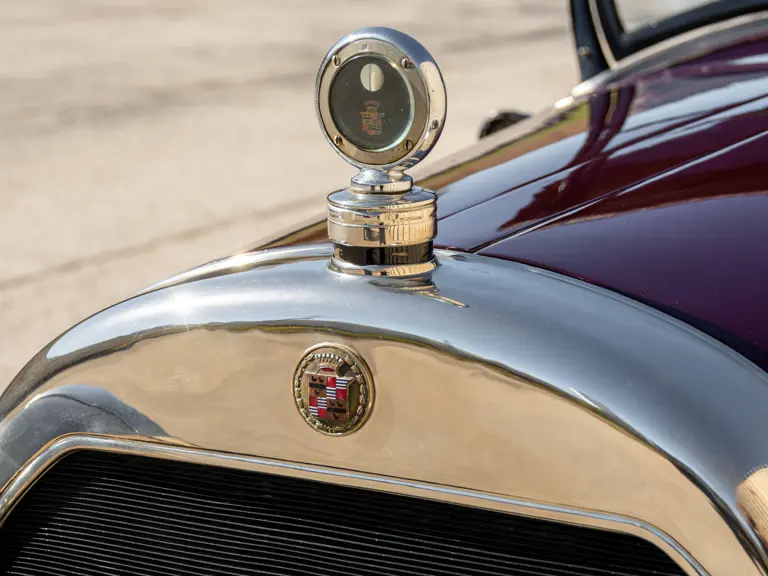

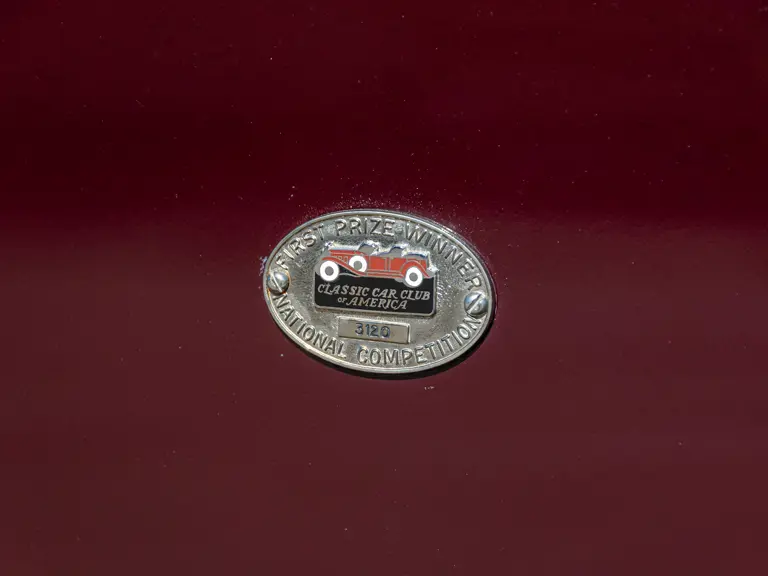
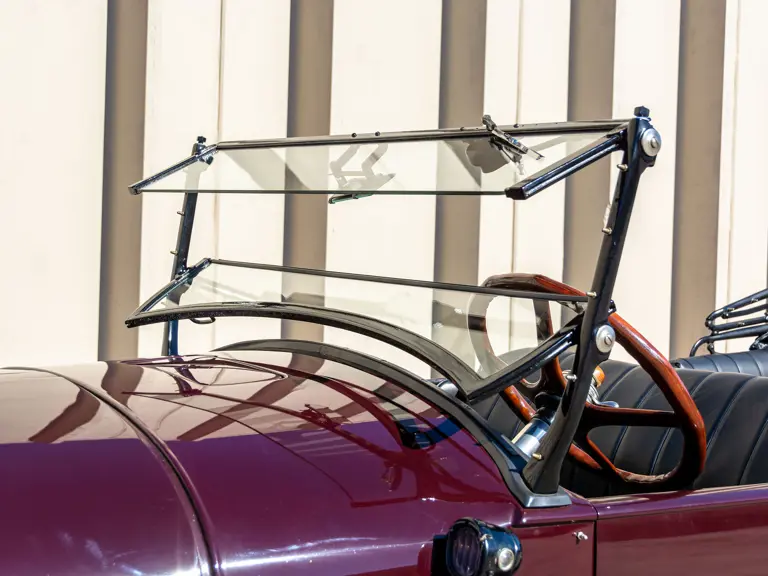
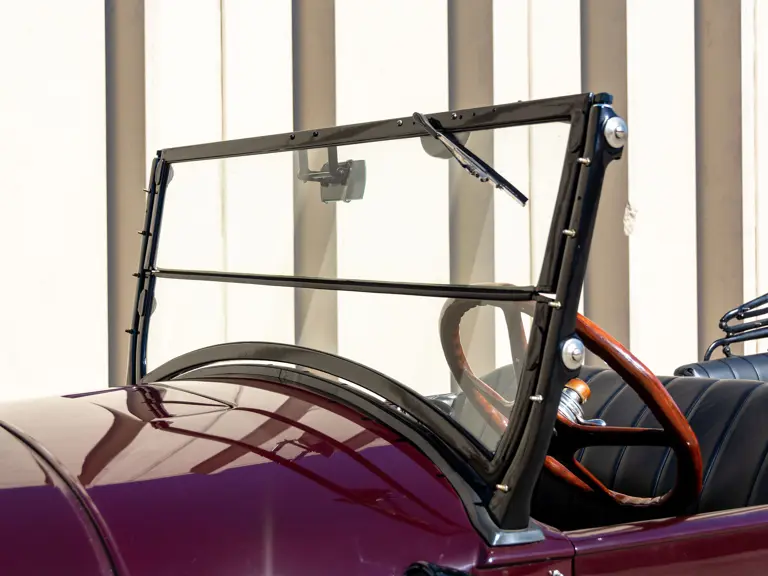
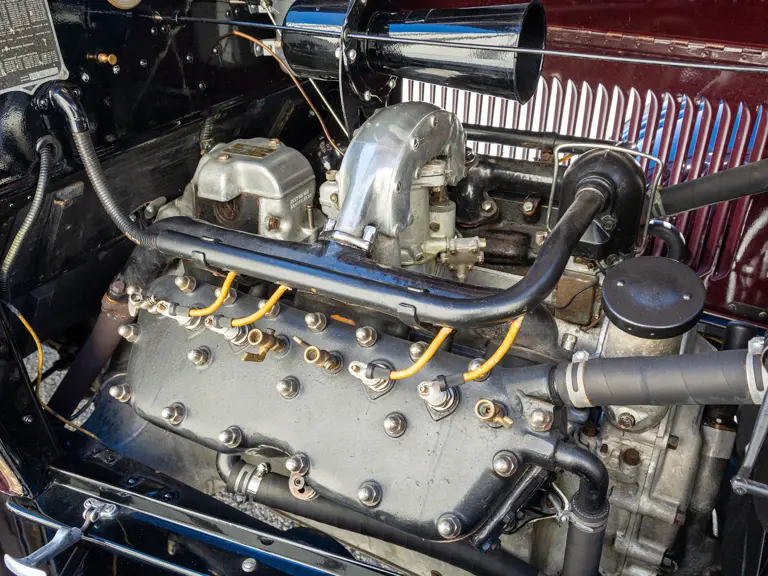
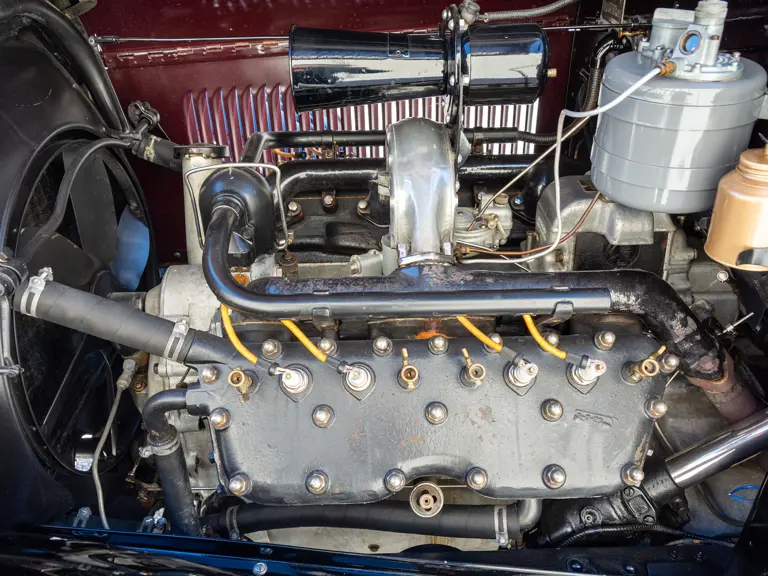
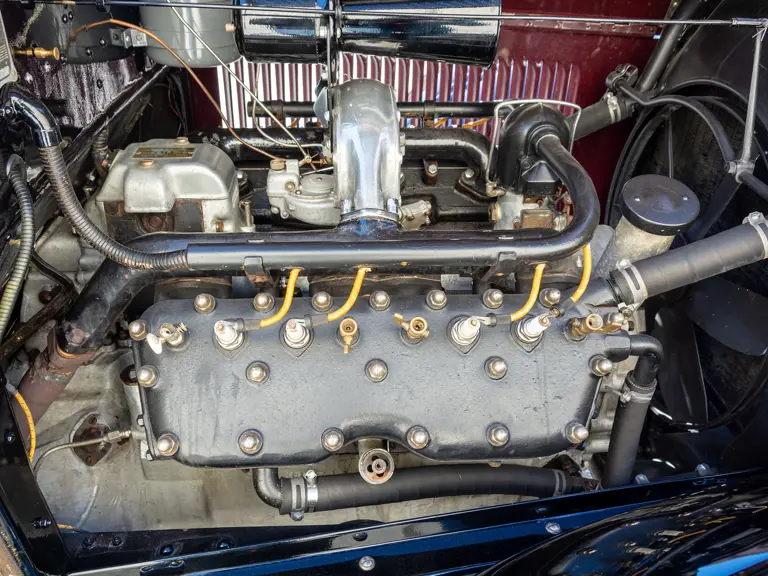
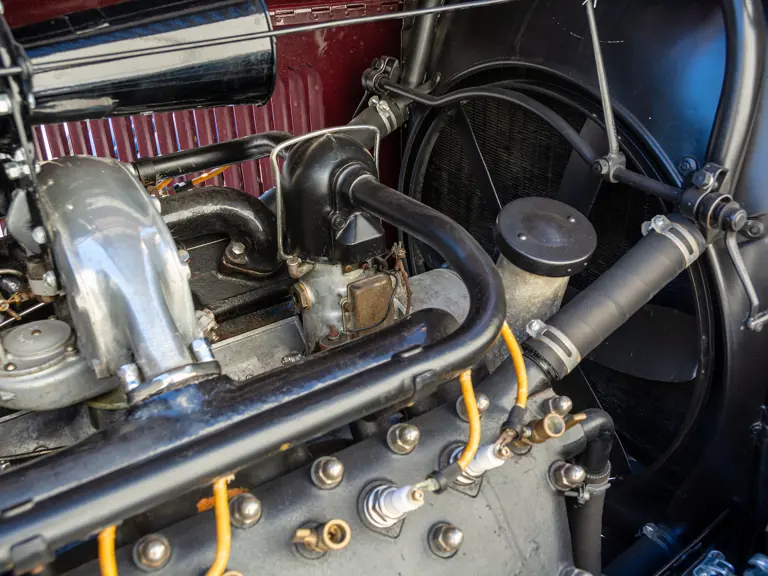
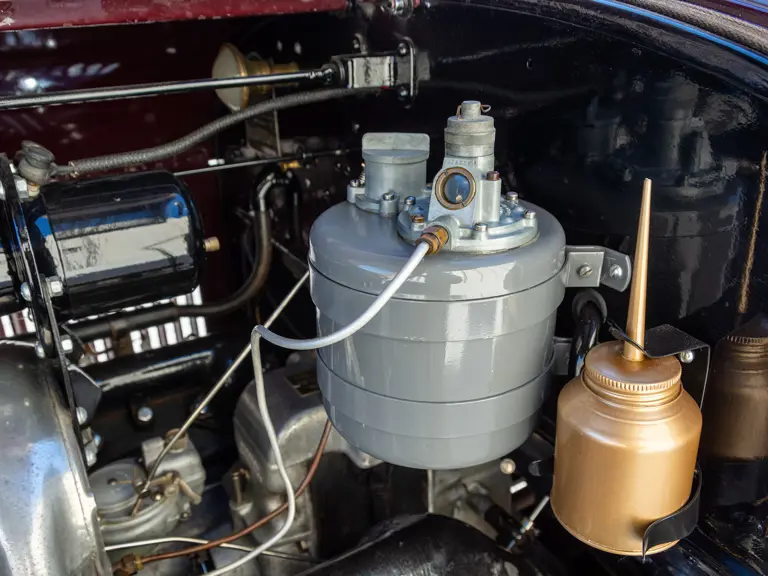


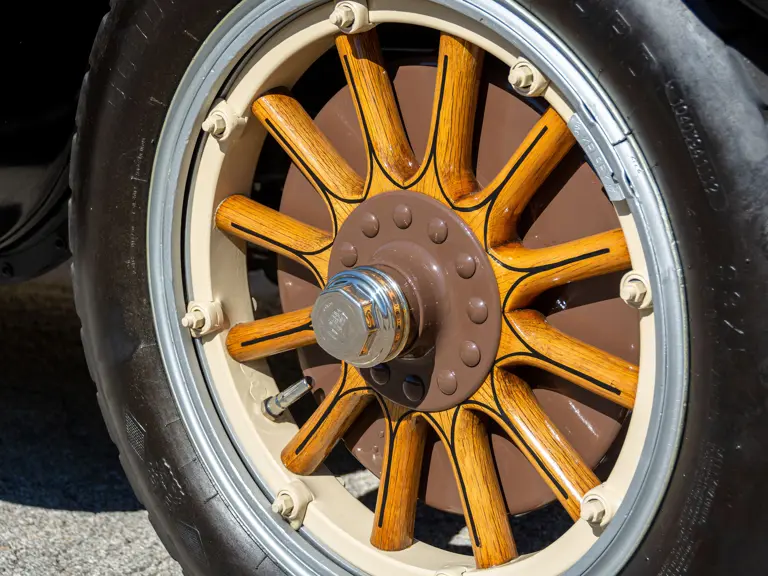

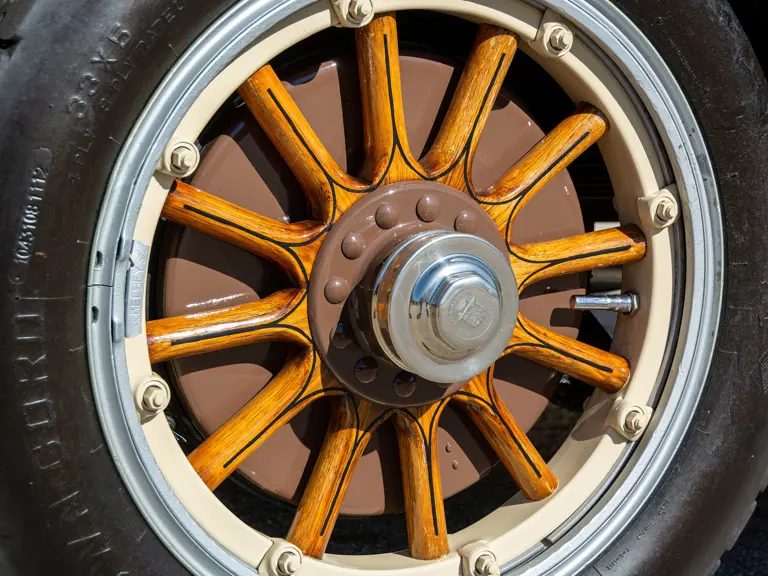
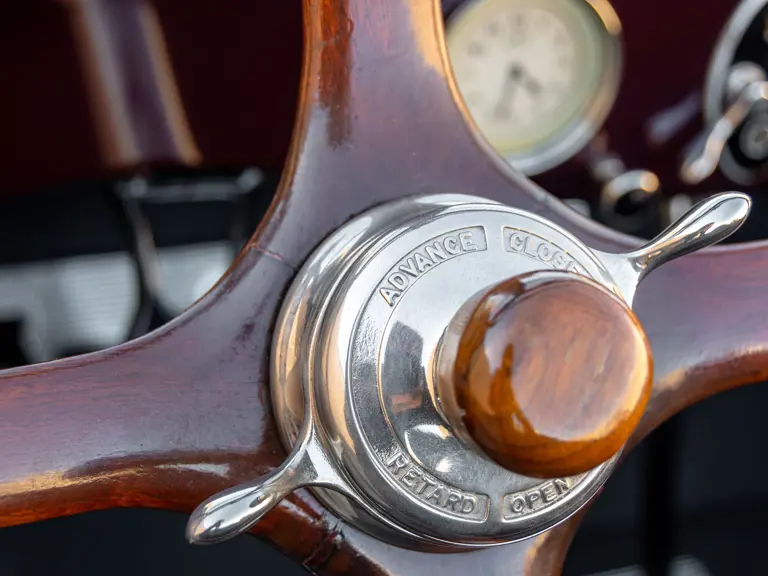
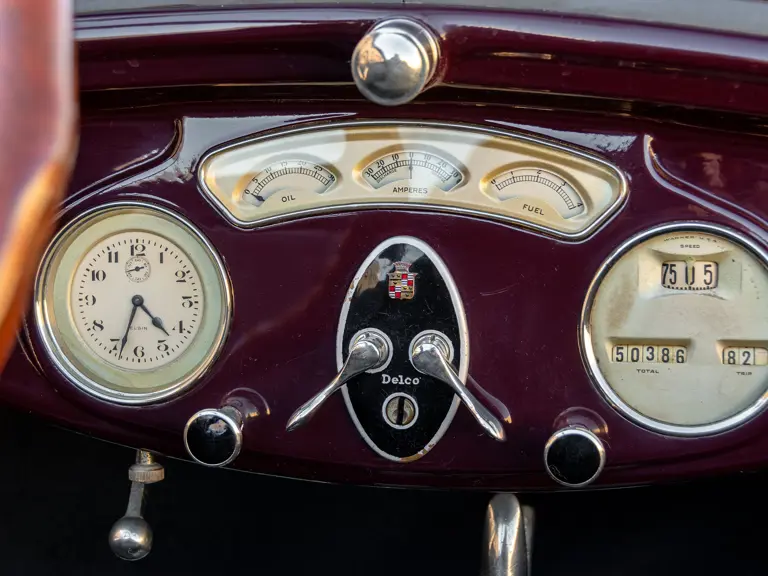
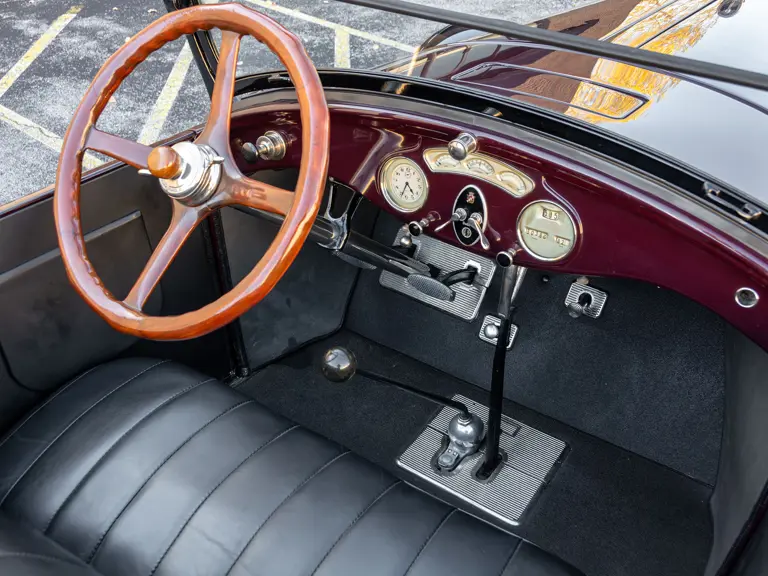
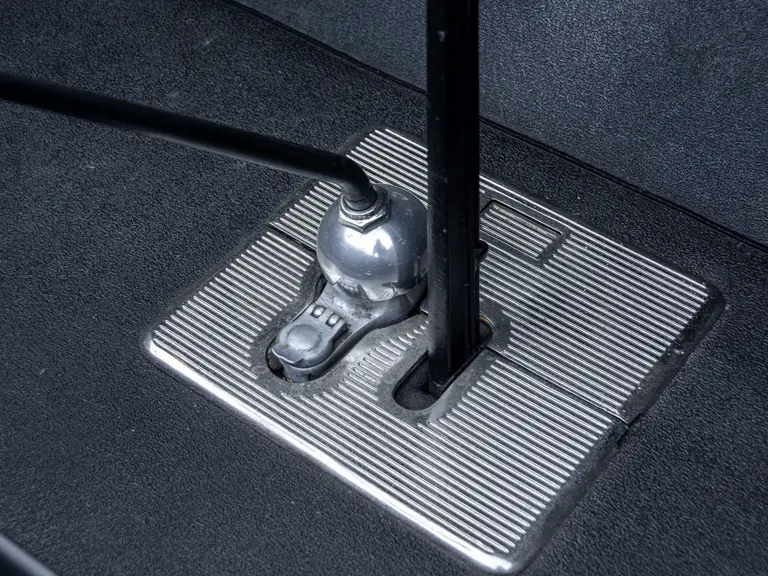
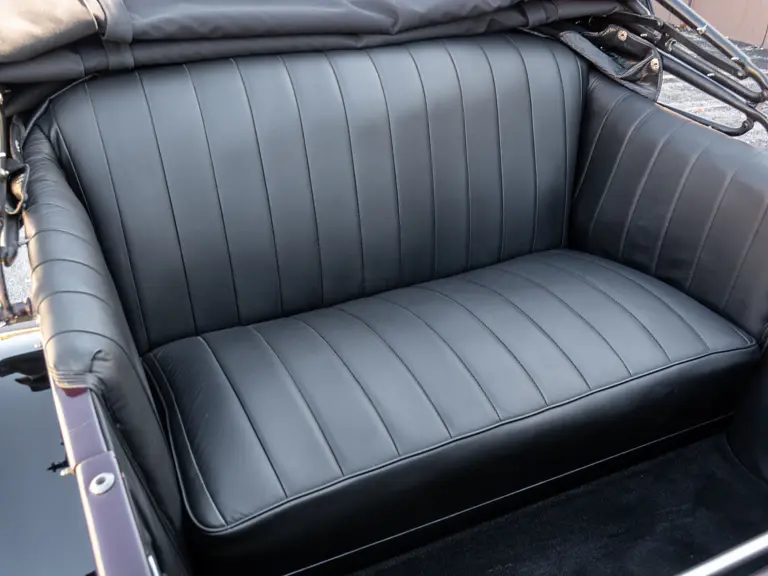

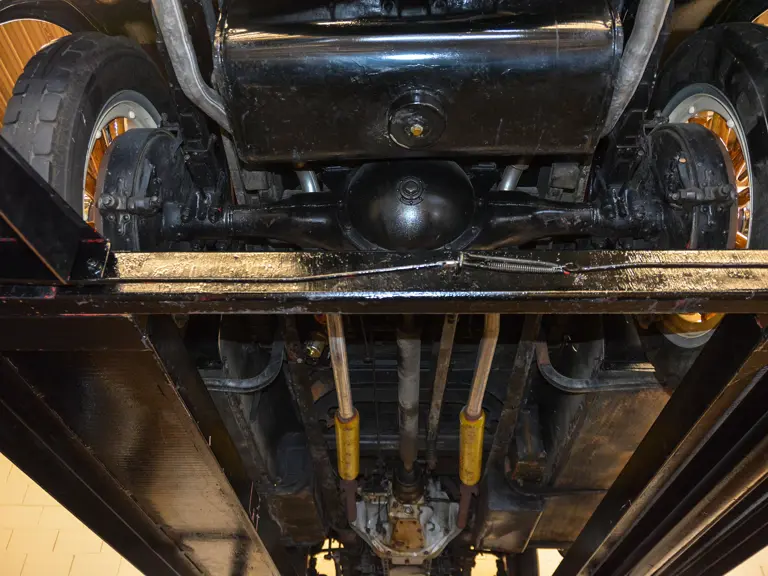
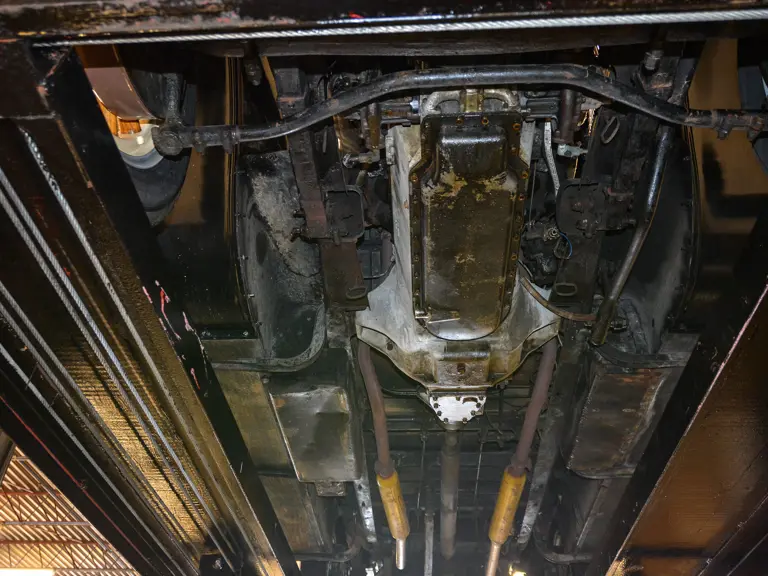

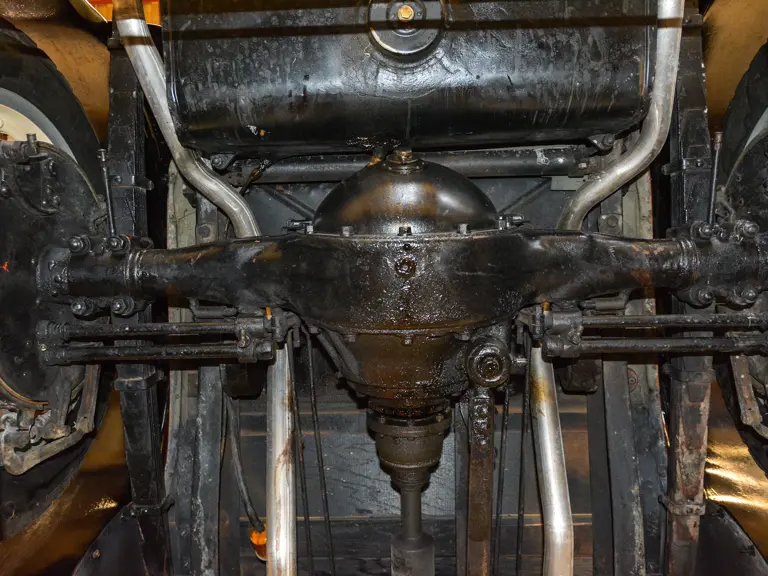

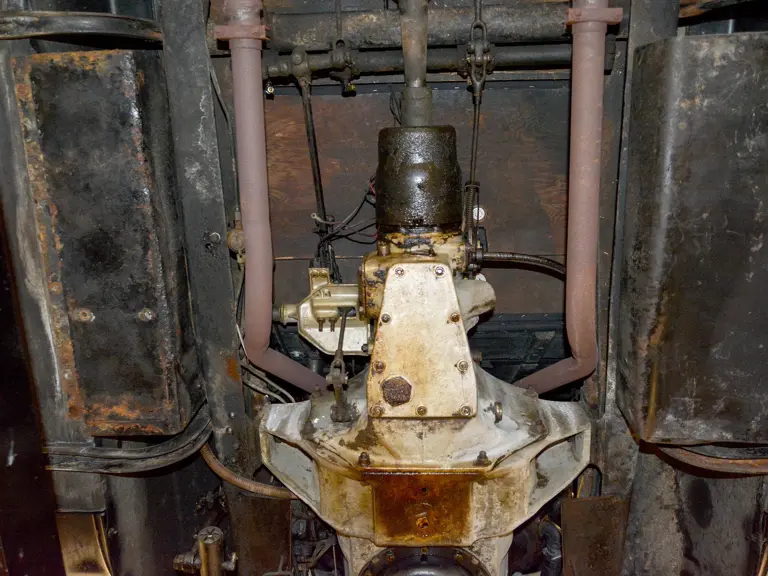
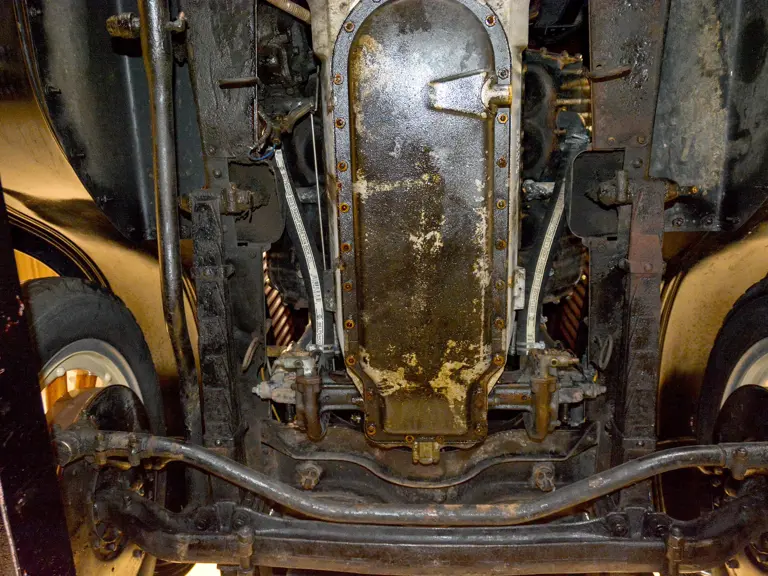
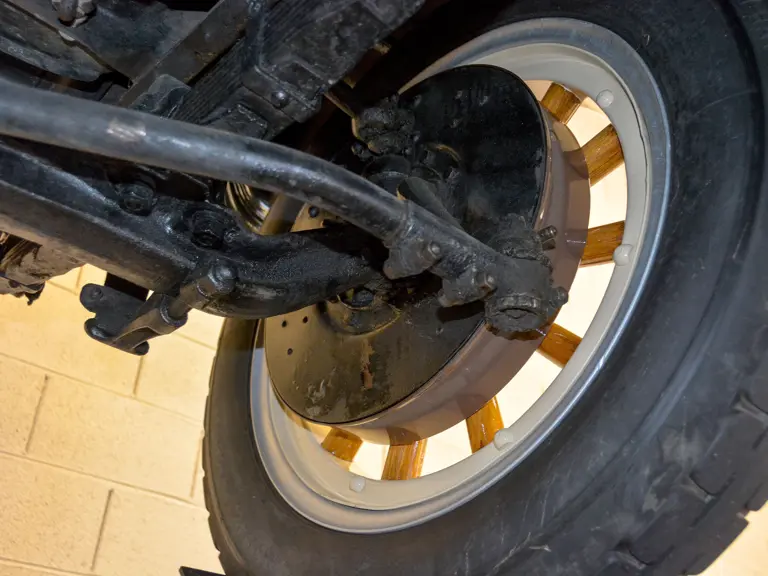
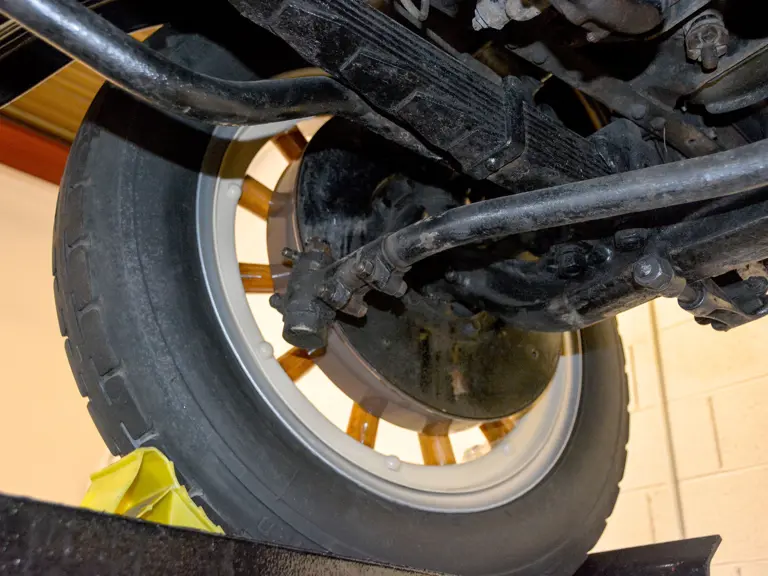
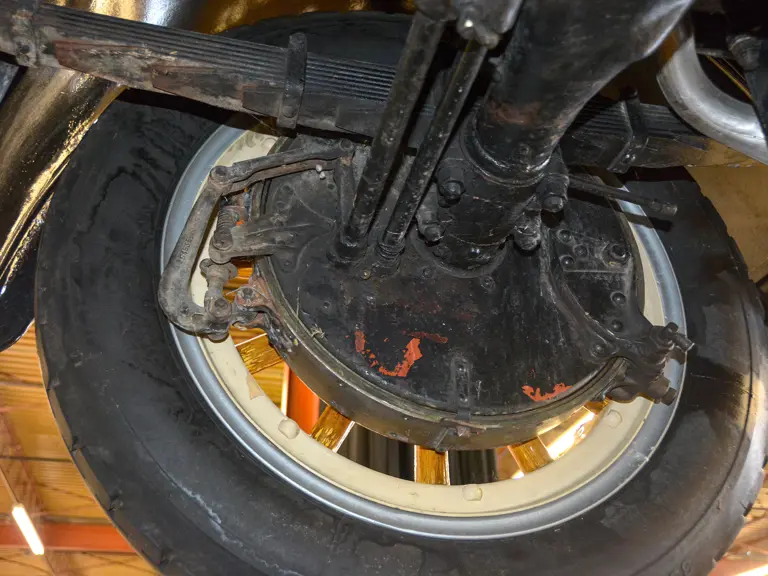
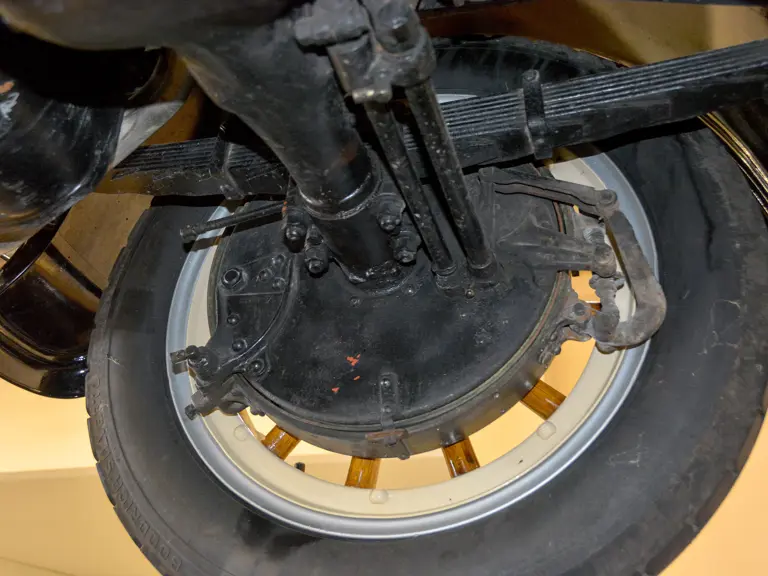
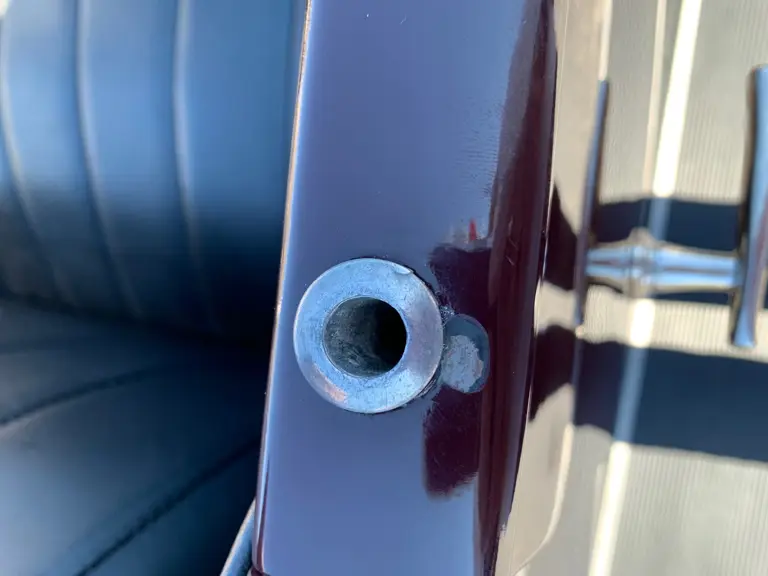


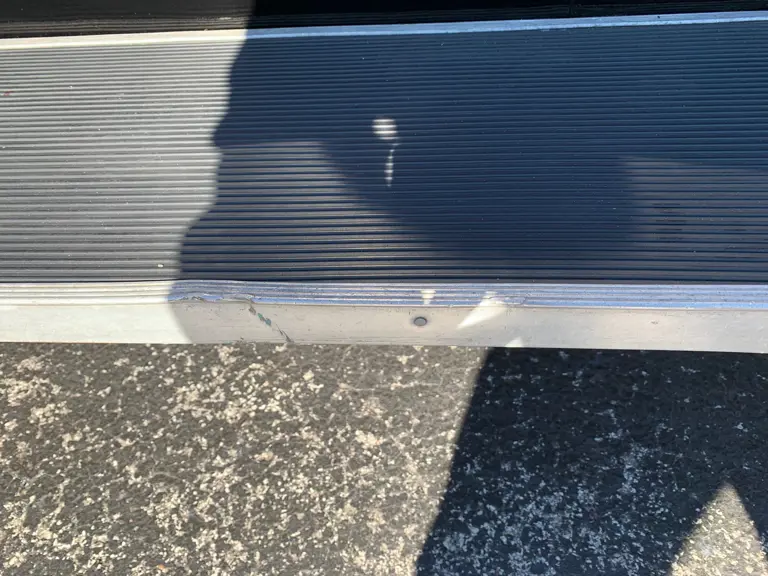



 | St. Louis, Missouri
| St. Louis, Missouri
